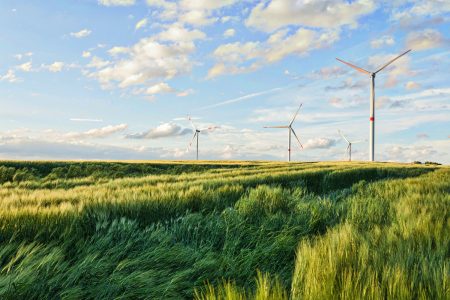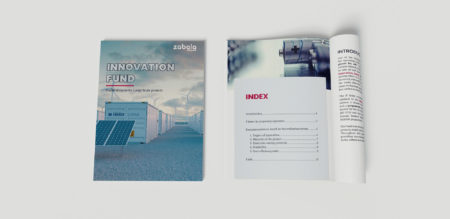This website uses cookies so that we can provide you with the best user experience possible. Cookie information is stored in your browser and performs functions such as recognising you when you return to our website and helping our team to understand which sections of the website you find most interesting and useful.
What you need to know about the Innovation Fund
The programme is expected to allocate some 38 billion euros by 2030 to finance Europe's decarbonisation

Innovation Fund is a programme of DG CLIMA that builds on the lessons learned from the NER300 programme. The programme is expected to allocate some 38 billion euros until 2030, to finance the decarbonisation of Europe. It is one of the key elements that should help in the European Commission’s strategy for a climate-neutral Europe by 2050 outlined in its communication “A Clean Planet for All”.
The funds come from the European Union Emissions Trading System (EU ETS). And from the end of 2022 they are also supported by REPowerEU, the EU’s plan to eliminate dependence on Russian fossil fuels.
Third Innovation Fund Small Scale call for proposals now available
Who’s it for?
This is a great opportunity both for the energy sector and for industrial sectors such as steel, chemicals, paper, cement, ceramics, and other energy-intensive industries. The Innovation Fund is therefore primarily aimed at companies.
Who manages the Innovation Fund?
The Innovation Fund calls for projects will be managed by INEA (Innovation and Networks Executive Agency), the same agency that manages programmes such as CEF – Connecting Europe Facility, or that manages the Energy or Transport demonstration projects in HORIZON 2020.
INEA aims to make grant management easy and flexible, based on milestones and the degree of compliance with emission targets, unlike other programmes based on technical and economic justifications.
What grant does the Innovation Fund give?
It depends on the call, whether they are Large Scale or Small Scale projects.
- Large Scale. In this case, these are projects whose capital expenditure (CAPEX) is greater than 7.5 million euros. The call for proposals is made in two phases. The subsidy, in this case, can be up to 60% of the relevant costs. For most cases, the relevant cost calculation proposed by the Innovation Fund is based on the Levelized Cost of Product and its comparison with the corresponding benchmark.
- Small Scale. This call seeks to finance pre-commercial projects based on innovative technologies that are new in their markets, i.e. that are a technological novelty. And that have a significant potential to reduce greenhouse gas emissions. It is aimed at projects with a CAPEX of between ¤2.5 million and ¤7.5 million. Aid can cover up to 60% of the costs.
What exactly does technological novelty mean?
We are not talking about R&D projects, which would reach a TRL7, but in this case we would be in a TRL8: the first industrial application of a technology (“first of a kind” projects) or with technologies that are not yet commercially available. Only projects that are innovative in relation to the state of the art will be financed.
How are the avoided greenhouse gas emissions calculated?
INEA will provide guidelines to clearly calculate the avoided greenhouse gas emissions, whether CO2 or other gases included in the Emissions Trading Scheme. The calculation methodology will be different depending on the type of project: a renewable project is not the same as an industry project, and an energy storage project is not the same as a carbon capture and use project.
What is the maturity of the project?
The project is considered “mature” if it is ready to be evaluated by investors. A company’s investment project, as it would be presented to the company’s CEO or to potential investors or banks, is the basis for an Innovation Fund application.
What is the difference between a Horizon Europe project and an Innovation Fund project?
The Innovation Fund will fill the funding gap that lies behind the R&D projects usually funded by HORIZON 2020 or Horizon Europe, and which hinder the first commercial projects of a technology before it is mature.
The Innovation Fund proposes to subsidise real investment projects, with high innovative content and in many cases with very high investment values. Furthermore, as these are investment projects, no consortium is required: a company can submit an individual application to the Innovation Fund, although it is also possible to do so in a consortium.



